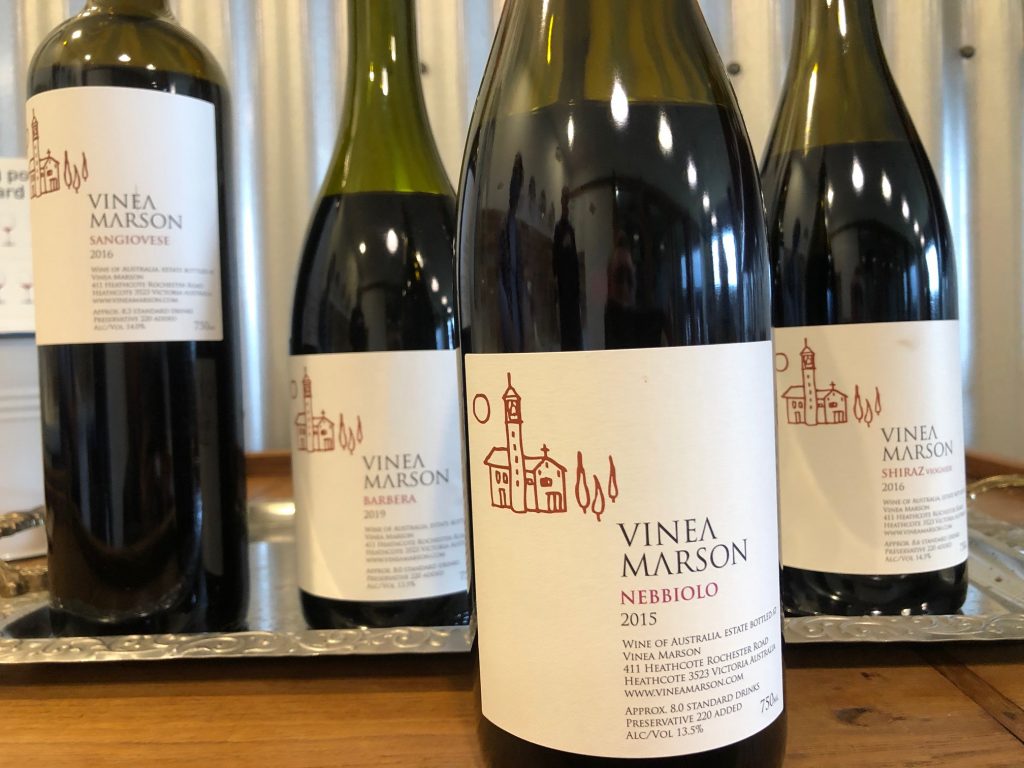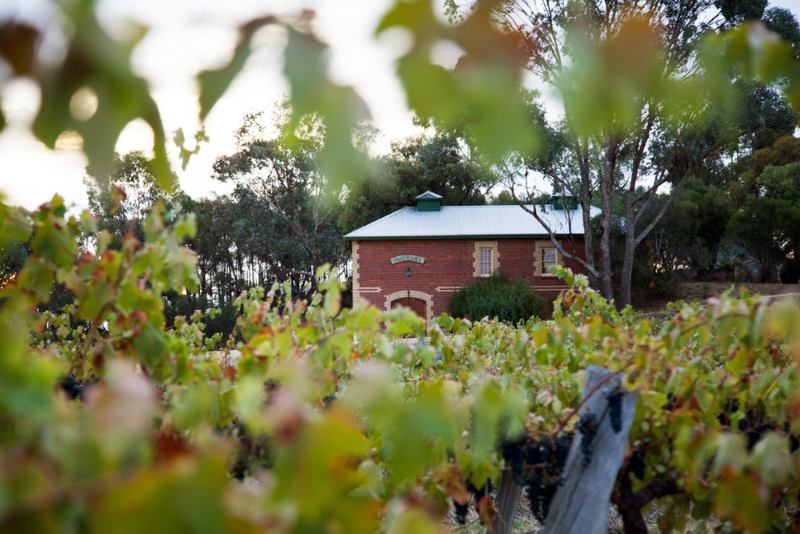The region of Heathcote in Central Victoria has been long lauded as the next ‘big thing’, but has it reached its potential? Let’s find out.
Heathcote shares it origins, like much of Central Victoria, with the discovery of gold. It was the scene of one of the shortest, but frantic, gold rushes in 1852 which saw 40,000 people flock to the area, only for them to move on in less than two years, leaving a population of around 2,000 to establish the town and area. Nobody knows where the name of the town came from. Maybe a British MP, or a reference to the abundance of wild heath in the region. The town is comprised of an elongated high street that accommodates the busy Northern Highway thundering by.

According to the regional website, the first vineyards were planted by Henning Rathjen in the Colbinabbin district during the 1850s. Whilst the vineyard didn’t survive it was replanted and is now the Whistling Eagle Vineyard, and is still owned by 4th generation descendants of Henning Rathjen. During the mid-nineteenth century the area had a number of vineyards, but these were all pulled out by the government in 1896 to try and stop the spread of phylloxera which had been discovered in the region that year. Tantalisingly, one vineyard survived, the Segafredo’s in Graytown was planted in 1891. Cuttings were taken by both David Traeger and Paul Osicka from these vines to establish new vineyards.
Paul Oskica is a name I’m familiar with. He established a vineyard in 1955, which pre-dates many of the more well know wineries. Always a quiet achiever, his wines gained a solid reputation in Melbourne; but fairly unheard of outside of Victoria. Paul sadly passed away in 2019, but his highly experienced and well-travelled son Simon now runs the business.
The 1970s saw a number of vineyards such as Jasper Hill and Mount Ida established and in 1980 David Anderson planted the Wild Duck Creek vineyard. Their 1997 Duck Muck Shiraz was awarded 99 points by Robert Parker Jnr and immediately achieved international cult status. Wines are still strictly on allocation now.

The climate and soil around Heathcote provide the perfect conditions for grape growing. The Heathcote region is at an elevation between 160 and 380 metres and the majority of soils under vine are deep (3 to 4 metres) red Cambrian. These ancient igneous soils were forced to the surface by two fault-lines (McIvor and Heathcote) and are around 500 million years old. The soils have good water retention, handy in drought years. Topographically the fault lines dictate the landscape and run for more than 60km. The region is a similar shape and size to Alsace. As well as these ancient volcanic soils you have overlays of sedimentary rock as well as gravel dropped by retreating ice sheets!
From chatting to Mark Hunter, winemaker at Sanguine Estate, I understand that the famous Australian viticulturist Richard Smart identified the Heathcote region has having a similar climate to Rioja, with warm temperatures, but cool nights.
As some of my students would know, I’m a firm believer that regional identity is driven home if there is an iconic producer; and Heathcote has one. Jasper Hill was established in 1975 by Ron Laughton.
Vigneron Ron has just celebrated his 40th vintage and has guided Jasper Hill to great heights with his Georgia’s Paddock and Emily’s Paddock Shiraz. Both vineyards are named after his two daughters. Georgia’s Paddock is a slightly cooler site on deep rich soils and is 100% Shiraz. It’s typical a full bodied, intense, powerful wine that demands ageing. Emily’s Paddock is more of a field blend with Cabernet Franc. It has shallower soils and more refined. Comparing my notes of the 2015 you can see the difference.
2015 Georgia’s Paddock – meaty, black pepper, savoury notes. Dry, full-bodied, chocolate and black cherry flavours, intense powerful finish. Highly Recommended
2015 Emily’s Paddock – lifted floral notes with redcurrant. Lovely elegant palate with well balanced tannins and juicy acidity. Outstanding
Year in year out Jasper Hill Nebbiolo is also an outstanding wine. The La Pleiade Shiraz is a partnership between Jasper Hill & the Rhône Valley producer M.Chapoutier. Ron has been joined by his daughter Emily Mc Nally and she makes her own wines under the successful Occam’s Razor (Shiraz) and Lo Stresso labels. Her Lo Stresso Fiano can be outstanding.
Winemaker Mario Marson at Vinea Marson spent many years working under Dr John Middleton at Mount Mary in the Yarra Valley, as well as bouts of overseas winemaking in places like Isole e Olena with Paolo De Marchi in Tuscany. Try Isole e Olena if you want to know what a benchmark Chianti should look like. In 2000 Mario planted his vineyard in Heathcote and has slowly developed an impressive array of wines, focused on Italian varieties in line with his family’s heritage.
On the white wine front he makes a good Prosecco, an interesting field blend called Grazia as well as a Friulano and an outstanding Viognier. The whites are sourced from the Alpine valley. Reds include a Sangiovese, Barbera and an excellent Nebbiolo. For Heathcote traditionalist there is also Shiraz Viognier. Here is a link to my tasting notes.
At Vinea Marson cellar door wines can be tried with some traditional antipasti including cured meats and specialist Italian cheese. These days daughter Madeleine is deeply involved in the winery and business.

Sanguine Estate lies in the central area of Heathcote, north of the township, and is wedged between Mount Ida and She Oak Hill. I’d call this the epi-centre of the region and it is where Jasper Hill and Vinea Marson is located. Deep clay loam filed with decaying Cambrian rock takes up the bulk of the vineyards, but they also have other soil types that provides blending opportunities. “Wines from Cambrian soils display a ripe plum and graphite earthiness. However, I get more complexity into wines from our different soils. For example, we have vines planted on medium red clay over soapstone. I tend to get blueberry fruits and more dried herbs from these soils.” Comments Mark in an interview I did for Winestate Magazine.
Sanguine Estate was established by Tony and Linda Hunter in 1996 and it is another family story, this time with extended family members involved with all aspects of the business. It is another Italian heritage story as well with Tony’s Great Grandfather, Pietro D’Orsa being a Swiss Italian migrant that planted vines close to the town of Maldon which is a one hour drive to the west of Heathcote. Sanguine Estate has a solid line up of wines including the rated Progeny and Inception Shiraz review recently. Click on the links
Adrian Munari established Munari Wines in 1992 and farms around 7 hectares of vines. He is traditionally known for his age worthy savoury red wines such as School House Block and Ladys Pass Shiraz. Tasting notes here . Munari red wines are given some bottle age before release which softens the normal robust Heathcote style. Now with the help of his daughter India the business has expanded with an increase emphasis on Italian varieties such as Vermentino and Garganega and their Merlot vines have been grafted over to Sangiovese. The cellar door is open seven days a week and now includes a small cafe with cute sunroom and a courtyard for the summer. India is involved with the Heathcote Women in Wine and you can read more about them here

Munari Vineyards 
India Munari
Not tried recently, but notable other producers are Whistling Eagle Vineyard, Wild Duck Creek and Chalmers.
So, returning to my question: has Heathcote reached its potential? Well, I think so. It definitely has got all its ducks in a row with classic soil types, icon producers as well as an emerging array of Italian styles and a solid foundation of classic full bodied Australian Shiraz. With around 32 wineries to explore it can make a great weekend destination.
When to visit Heathcote
If you can plot your course to avoid lockdowns, lockouts and other disasters you could try visiting in October when the region holds its food and wine festival. Or check out the Sanguine annual Chamber Music Festival.
Eats and Coffee
Fodder for lunch and coffee
Palling Bros Brewery for a beer after wine
Gaffney’s Bakery for a pie
